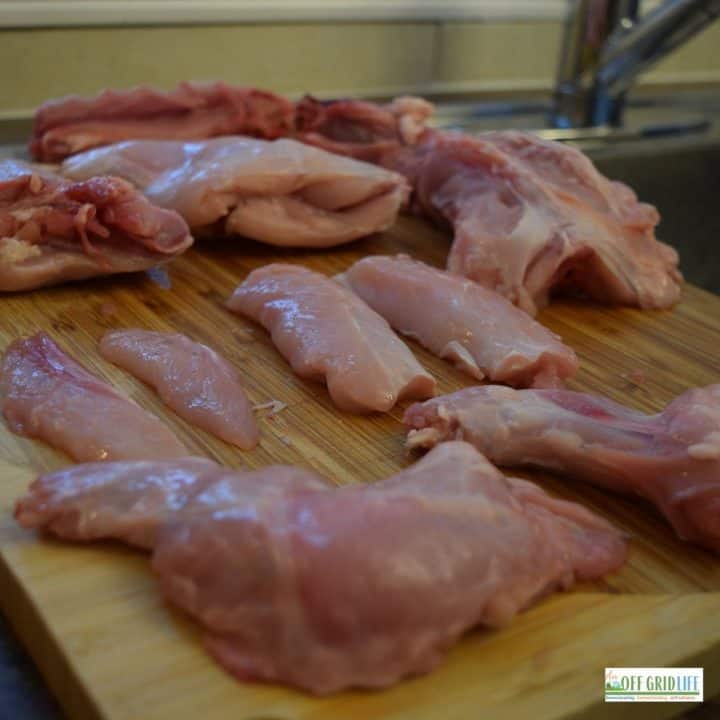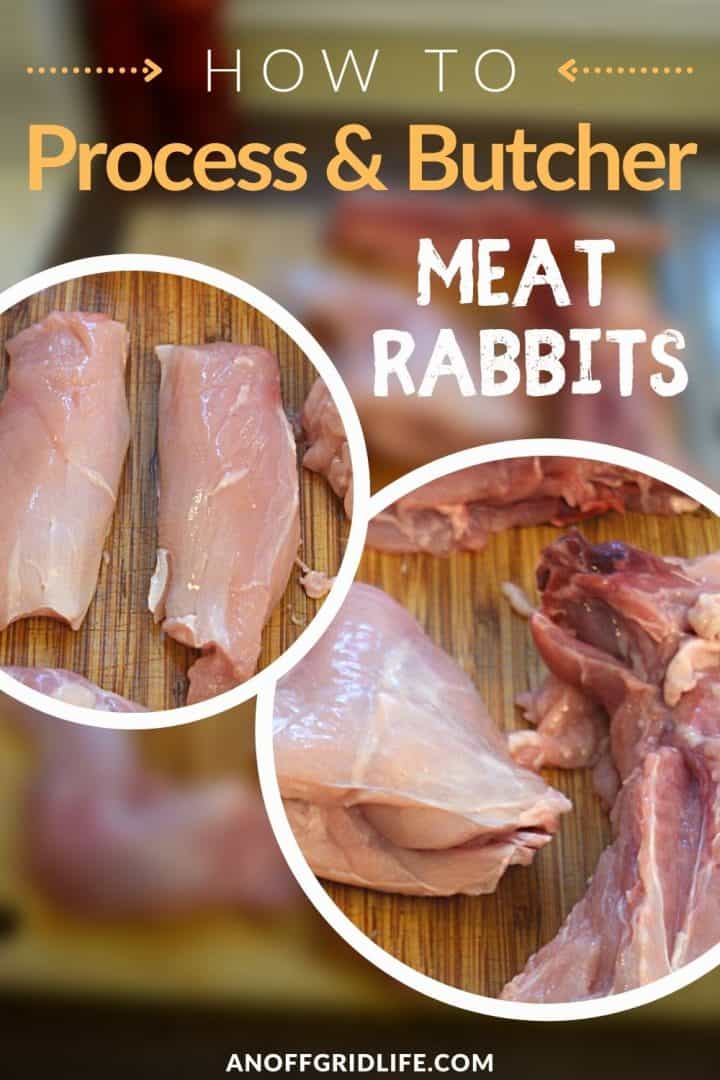Raising Rabbits For Meat #2: Processing & Butchering
 To get started cleaning and processing your meat rabbits, follow the tips below .
To get started cleaning and processing your meat rabbits, follow the tips below .
How Raising Rabbits For Meat Can Save You Money
How much of your monthly grocery bill goes towards buying meat ? Most likely a pretty large collocate. Finding ways to supplement your family ’ second kernel consumption with your own issue will help lower your grocery store bill. It will help boost your fiscal autonomy and lower your reliance on outside sources for your family’s food supply. even if you don ’ triiodothyronine fully cut out boughten meat from your diet, raising rabbits for kernel will give you a clean, healthy alternative to include in some of your favorite recipes. You could freeze lapin kernel for soups or stews. You can besides try smoking rabbit kernel for a different relish or using it in pemmican. If you have excessively many rabbits for your family, you may sell some to neighbors and locals, barter rabbit kernel for early things, or merely share with those in need. Selling rabbits for kernel or for breeding is a creative way to make some extra money when living off the grid. even with the inauguration and fertilize costs included, raising rabbits keeps its spot as one of the cheapest meats to raise on a homestead. For case, rabbits take 3 – 4 pounds of feed to gain 1 ram of weight. In comparison, gripe cattle take 6 pounds of feed to gain 1 beat of burden. That makes rabbits almost twice as efficient in the feed-to-meat ratio, saving you costs on feed.
When to Process Your Meat Rabbits
Depending on the breed of rabbit you have, there will be different ideal butchering ages. For the purposes of this article, we ’ ll stick with the New Zealand breed since it ’ s the most common for beginners, and easiest to get started with. For New Zealand rabbits, you want to process them once they reach the 10-12 workweek mark or about 5 pounds. Keep in thinker, the older your rabbit gets, the more feed they will require for less weight acquire. Because of this, you want to make surely you process your rabbits at the right age to avoid buying the extra tip that won ’ thyroxine give you a good feed-to-meat ratio. besides, the meat tends to taste better from younger rabbits. Don ’ deoxythymidine monophosphate forget, meat rabbits don’t have a “rut” or breeding season the manner early animals do. They have litters all class round of golf, which means you will have to be processing rabbits at least every 10 – 12 weeks, but possibly more much if you stagger your litters and get a irregular breeding department of energy .
What You’ll Need
Whether you ‘re butchering chickens, rabbits, or other homestead kernel animals, prepare everything you need ahead. Before you start, gather all of your necessary supplies and tools or equipment. Use this number to make indisputable you get everything you need :
- Skinning knife
- Knife sharpener
- Heavy shears
- Cut-resistant gloves
- 10-gallon bucket for the “ offal ”
- Bowl of urine for cleaning your knife and hands
- Hard flat come on
- Water hosiery with campaign body of water ( optional )
- Hopper Popper Combo
- 2 nails OR a room to suspend the rabbit while you work on it
If you don ’ t have these claim items, get creative with whatever ‘s available in your homestead kitchen or around the property. The water system hose is an optional convenience for cleaning up the mess subsequently, but decidedly not required.
As with any tongue, make sure your skinning blade has been finely sharpened. Dull knives make every cut difficult and increase the hypothesis of cutting yourself. Always keep your knives sharp ! The Hopper Popper jazz band is a identical useful joyride designed specifically for harvesting and butchering kernel rabbits. Made by a little family business in Oregon, this cock makes the unenjoyable job of processing rabbits more humane, effective, and easier .
How to Process Rabbits for Meat
To use the Hopper Popper, just follow the how-to guides found on their web site. It ’ sulfur quite simpleton once you get the hang of it. If you don ’ t have the Hopper Popper, no problem. here ’ second how to get started processing meat rabbits the old-fashioned way.
Dispatching the Rabbit
You first need to dispatch the lapin. Some people do this by plainly grabbing the rabbit around the neck and quickly snapping it to minimize any annoyance or suffer for the rabbit. You can besides just hit it in the back of the head with a hammer or mallet. A quick and well-placed strike will kill the lapin immediately. once dispatched, hang the rabbit top down with the head facing the grind. You can do this by placing two nails in a wooden wall or tree and hooking the rabbits ‘ feet around them. Tying their legs with string besides works well .
Skinning the Rabbit
Cut little slits around the feet of the rabbit to begin the skinning process. This might sound eldritch, but imagine the lapin is wearing a perspirer that you ’ re helping it pull off. Starting on one of the slits you equitable cut, use your knife to start separating the hide from the carcase and work down the leg until it meets the body. Now repeat this process for the other leg. once you have both legs done, use the same summons to work the stay of the clamber off of the rabbit. once you ’ ve skinned the rabbit all the means to the head, cut off the head and skin all at onc e. Place your offal bucket below and let the blood drain out of the carcase. Hose or wash off the carcase to remove any remaining hair.
Gutting the Rabbit
Starting at the anus, cut down the plaza of the rabbit. Be careful not to push your knife too deep, as you may accidentally cut open some of the guts that will sour the meat. merely cut slowly and shallow enough to give yourself a lot of control with the knife. As you cut down the rabbit, organs will start to fall out. As they fall, aim them towards your offal bucket to keep everything tidy and contained in the bucket. Make sure the cavity of the rabbit is empty, and all intestines have been removed. Once you ’ ve double-check that, cut the anus out adenine well. Hose down the inside and outside of the carcase again to remove any remaining guts and keep your meat houseclean .
Butchering the Rabbit
Raising rabbits for meat will give you a draw of drill in butchering. As with most things, the first fourth dimension is the slowest and most unmanageable. beginning by taking down the carcase and placing it on a hard flat surface like a wooden cutting board or tree stump. Flip the rabbit on its side, lifting a front leg up and outward. Run your knife along the scapula and towards the sternum to separate the leg and shoulder from the body. now move depressed to the hind stage on the lapp side of the carcase. Beginning at the top of the rump, cut down, separating the back leg from the carcase. You will feel the joints and bone connecting the leg, you can pop this out of the socket or tied cut through it with the shears. Repeat this entire process for the legs on the opposite side of the carcass. once the legs have been removed, cut out the remaining pelvic bones at the end of the carcase. Split the sternum down the middle. Loosen and pull back the eye of the loin, it ends at the last rib where the combat zone begins. You can then separate the rack from the saddle. Remove the remaining tailbone and belly fat, and you will finally have a perfectly butchered rabbit left on your cutting board .
Storing a Butchered Rabbit
once you ’ ve finished butchering your rabbits, place all of the kernel in a big toilet or bucket wax of cold water. Let it soak in the fridge for a day, as this helps remove any remaining blood from the body. After soaking for 24 hours, your rabbit will be ready for storing. The easiest and most coarse direction to store rabbit kernel involves vacuum-sealing it to freeze for extended periods. If you have a vacuum sealer or a alike solution for freezing kernel, that will work all right. Some people besides like to use option ways of meat conservation, like smoke, dehydrate, or canning.
Raising rabbits for meat is experiencing an increase in popularity due to homesteaders’ ability to generate hundreds of pounds of meat a year with such low costs to produce. Rabbits have a minor footprint compared with early types of livestock and reproduce at an incredible rate that helps you sustain a reproducible provision of kernel for you and your family. Want to learn more about raising homestead meats for your family’s consumption? Continue reading below.
Related Articles:
Like this post? Save it to your favorite Pinterest board for later!


The post Raising Rabbits For Meat #2: Processing & Butchering appeared first on Babypetdaily.com.
source https://babypetdaily.com/butchering-meat-rabbits-1663344250/
Nhận xét
Đăng nhận xét